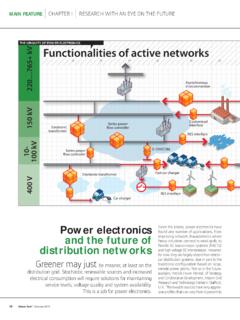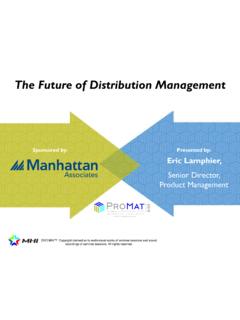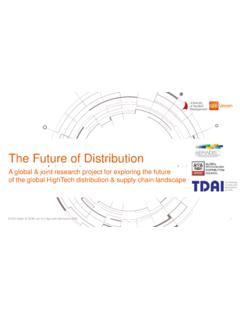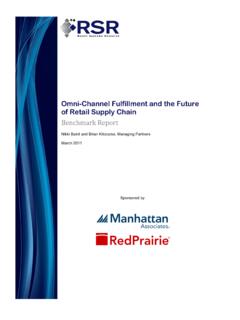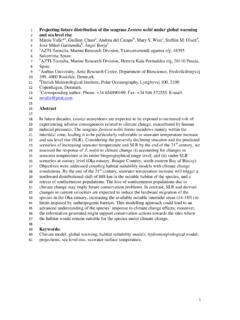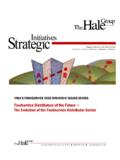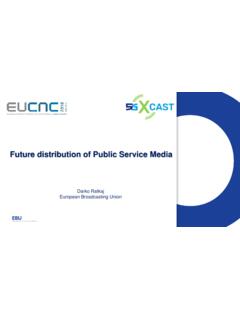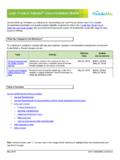Transcription of Army 2020 and Beyond Sustainment White Paper
1 Army 2020 and beyond sustainment white paper Neither a wise nor a brave man lies down on the tracks of history to wait for the train of the future to run over him. General Dwight D. Eisenhower 1 COMBINED ARMS SUPPORT COMMAND 30 August 2013 Sustainment White Paper Page 2 Intentionally Blank Sustainment White Paper Page 3 Table of Contents Foreword .. 4 Chapter 1 Introduction .. 5 Background .. 5 The Problem .. 6 Initiatives Considered in the Development of a Solution .. 7 8 Chapter 2 The future Strategic Environment and Strategic Guidance .. 9 The future Strategic Environment .. 9 Strategic Guidance Capstone Concept for Joint Operations .. 11 Strategic guidance - Army Capstone Concept .. 12 Chapter 3 Implications for Sustainment .
2 15 People .. 15 Organization .. 16 Mission Command and Information Systems .. 19 Science and Technology .. 20 Unified Action Partners .. 21 Chapter 4 What Sustainment Must Do Globally Responsive Sustainment .. 25 What Sustainment Must Do .. 25 The Solution Globally Responsive Sustainment .. 25 Measuring Success of Globally Responsive Sustainment Sustainment Performance Metrics .. 27 Achieving Globally Responsive Sustainment The Theoretical Transformation Model .. 28 Transformation The Big Ideas .. 29 Appendix 1 future Capability Focus Areas .. 30 Glossary .. 31 Sustainment White Paper Page 4 Foreword Our nation and armed forces are transitioning from more than a decade of war to a future that presents us with a range of challenges. Significant change in security policy over the past 18 months, combined with fiscal uncertainty means that we must re-think how the Army sustains itself in the next war, particularly as we transition from being an Army at war to an Army in preparation for the next conflict.
3 This White Paper is a key document for change in the Sustainment community and will inform both the revision of the Army Functional Concept for Sustainment and the broader force modernization process. It leverages the Global Logistics 2020 effort, looking at the contemporary issues that will drive change in how the Sustainment community shapes the future . It provides a broader, integrated view of national strategic issues, the industrial base, the generating force, and the operating force executing Sustainment activities in support of the warfighter. This White Paper proposes an approach called Globally Responsive Sustainment . This approach identifies a range of attributes that will shape the future Sustainment force. It follows the Capstone Concept for Joint Operations, which describes the need for Globally Integrated Operations.
4 Globally Responsive Sustainment is the Army s contribution to meeting the need of Globally Integrated Operations. Globally Responsive Sustainment seeks to produce a Sustainment system that is optimized, integrated, and synchronized, while ensuring that it is affordable, relevant, and avoids unnecessary redundancy. Globally Responsive Sustainment proposes a future Sustainment force that is agile and flexible, integrated, protected, trained and ready, precise and responsive, and affordable. Although much of this approach for the future has yet to be realized, the Big Ideas that the Sustainment community is pursuing have been identified in this White Paper . These will evolve toward our vision of Globally Responsive Sustainment .
5 I am confident that the concepts in this White Paper will promote more ideas and that our thinking will sharpen as we evolve into a Globally Responsive Sustainment force. The Big Ideas in this Paper are foundational. Our success lies in our ability to contemplate, discuss these ideas, and determine spinoff opportunities that must also be explored. We cannot wait. The Army is changing and so must Sustainment ; we must proactively approach this change to ensure that we are prepared to support and sustain our Army whenever and wherever called. _____ LARRY D. WYCHE Major General, Army Sustainment White Paper Page 5 Chapter 1 Introduction Background The strategic environment of 2020 and Beyond will look decidedly different from what planners envisioned at the start of this century.
6 Changing priorities, varying operational environments (OE), and continuing budget constraints will each shape the United States national security policies. The Army will become smaller and leaner, yet it will need to maintain the capabilities to respond effectively and decisively to global challenges. Such a response requires strengthening interorganizational relationships our unified action partners to include geographic combatant commands, functional combatant commands, our sister services, other governmental and non-governmental agencies, private industry, international governmental organizations, and multinational partners. The past 10 years have seen unparalleled change during a period of high operational tempo supporting two concurrent operations and a number of domestic and foreign humanitarian assistance/disaster relief (HA/DR) missions.
7 At no point were operations compromised by a lack of Sustainment ; albeit there were issues to resolve. The Army is now at a strategic juncture and must develop a well-grounded proposal to guide the design of Sustainment 2020 (and Beyond ) that is optimized, integrated, and synchronized, while ensuring that it is affordable, relevant and avoids unnecessary redundancy. Sustainment must be capable of meeting the needs of the Army in the future . From an Army at War to an Army of Preparation. The Army has been at war for more than 10 years. Sustainment has rapidly evolved, expanded and adapted, while modifying force structure, procedures, capabilities, and systems to meet the challenges of operating in two simultaneous theaters for a protracted period.
8 These changes included moving from the Army of Excellence to the current modular construct. This change has resulted in a Sustainment philosophy that focuses on a distribution-focused logistics system with a single Sustainment commander in theater. This change also altered historical relationships between supporting and supported units, particularly at the division and corps levels, between Sustainment units and G-4 staffs1, and arguably internally to Sustainment formations. This was alluded to by the 10th Sustainment Brigade commander at the recent reverse collection and analysis briefing who commented, Direct little, influence everything. 2 The future strategic environment will likely differ from Operation Enduring Freedom and Operation Iraqi Recent strategic guidance has also indicated the United States ( ) will focus its global presence in the Asia-Pacific region4, presenting a range of different challenges to the military.
9 This change from an Army at war to an Army of preparation with the potential to operate in very different environments means that the Sustainment community must continue to adapt and prepare for the next operation. Inherent to this is an enduring requirement to retain the ability to globally project power and sustain forces. The pivot to the Asia-Pacific region will require different organizational structures, greater integration of the institutional Army with the operating force, differing vehicles and protection and reinvestment in capabilities ignored over the past 10 years such as joint logistics over-the-shore (JLOTS) and watercraft. The Sustainment vision for addressing future challenges is Globally Responsive Sustainment .
10 This is depicted in figure 1. Aim Describe the change in strategic guidance and problem to be addressed, including underlying considerations and assumptions. Sustainment White Paper Page 6 Figure 1 From war to peace Purpose. The purpose of this White Paper is to describe the changed future strategic environment, taking into account the strategic guidance, outlining the implications for the Sustainment community, and identifying what Sustainment must be able to accomplish. Furthermore, it attempts to define the capabilities required to sustain the Army s future unified land operations (ULO). The Problem What must the future Army, as part of a joint and multinational force, do to integrate and synchronize operational and institutional Sustainment forces and capabilities to effectively sustain ULO?
